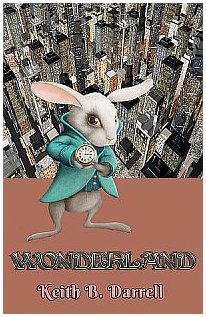Has America raised a generation of wimps?
College campuses are awash with a series of innovations designed to mollycoddle university students who are old enough to vote but not old enough to step out into the big bad world of college without “trigger warnings” and “safe spaces”. At the same time, the most privileged generation of minority students – who never in their lives experienced the terrible racism that was a daily part of their grandparents’ lives – angrily protest so-called “white privilege” on campuses across the country.
Apparently, attending college is no longer about broadening one’s mind or horizons, lest the poor, sensitive students stumble across a book or an idea that upsets or offends them. Teachers are now asked to warn students in their course syllabi of any required textbooks that might contain disturbing material, so that sensitive students may drop the class rather than be exposed to such content. I guess that means no more history courses, because history is full of disturbing material, like war and genocide. So is literature, so we can strike both subjects from the course catalog.
The problem, of course, is that history and literature are based on life itself, which is also filled with its fair share of disturbing and offensive events. A sensitive student might prefer not to read Anne Frank’s disturbing firsthand account of life under Nazi occupation. Unfortunately for many students like Anne herself, they did not have the option to exempt themselves because life doesn’t come with a trigger warning. Some things are supposed to disturb you, upset you, and offend you. They carry messages, not trigger warnings, and usually the messages are important. Such content should not be eschewed but rather embraced. Learning only occurs when one has stepped outside one’s comfort zone.
The concept of creating “safe spaces” on campuses has resulted in the exclusion of students who are not members of the protected class that are deemed to need such protection, as well as in the abridgment of the right of freedom of speech by anyone whose words might offend such protected class members. This can extend to colleges having to retract invitations to guest lecturers or even comedians because the content of their speech might be offensive to selected groups of individuals. Instead of becoming a marketplace for the exchange of ideas, college campuses have become bastions of censorship and groupthink. The New York Times reports one student retreated to a campus safe space from a lecture because “I was feeling bombarded by a lot of viewpoints that really go against my dearly and closely held beliefs.” This runs counter to the entire purpose of college as an institution which students attend precisely to encounter new ideas and challenge preconceived notions. The historical equivalent would be to repeal the Enlightenment and usher in a return to the Dark Ages.
The real world doesn’t have safe spaces. College is a transition for young adults leaving their parents’ home yet not quite ready to begin their own homes and careers. It is the ideal time to prepare for the big, bad, and extremely unsafe world out there, not to go scurrying off into a safe space hugging your teddy bear. Someone said something you didn’t like? Deal with it. It’s going to happen a lot over the next 60 or so years. Grow a pair. Confront reality, don’t avoid it by creating your own unreality.
When I was seven years old, there was such a thing as white privilege. I went to a “whites-only” segregated public school. No one forced me to sit at the back of the bus. I drank from the “whites-only” water fountain, and swam in the community “whites-only” pool. White people actually did have privileges in American society that blacks did not have. But no college student today can claim he or she was ever forced to attend a segregated school, or sit in the back of a public bus, or forbidden to drink from a “whites-only” water fountain, or denied access to a public swimming pool because of the color of their skin. Times have changed.
By the time I was old enough to apply to colleges, schools had instituted quotas to ensure that a sufficient number of minority students were accepted and enrolled – without regard to whether they met the same criteria as other non-minority students. Like blocks of reserved theater seats, a set number of college admissions were set aside for minority students. While the idea of affirmative action was well-intentioned as a remedy to correct past wrongs, the result was to create greater injustice. Less qualified minority students were admitted ahead of, and in place of, better qualified white students solely on the basis of their race. Modern white students were made to suffer for the social inequities of generations before their time. White privilege gave way to minority privilege.
Years later, I recall a Fortune 500 company interviewer telling me candidly that while I met the qualifications his company was looking for, they really needed to hire a minority. He laughed and said I’d be hired on the spot with my academic background if I were a black woman with a Hispanic surname. White privilege was dead and buried.
Times have indeed changed. Had they not — were society today as it was when I was seven years old — then I would be leading the protests on campuses decrying “white privilege”. But it’s time for today’s young people to realize that this is not the 1960s and that society in 2015 is completely different. But wait. In order to do that, students who weren’t alive then would have to study history to know the difference. And that would mean stepping out of their safe spaces and eschewing the trigger warnings. Now I understand the source of their confusion.





No comments:
Post a Comment